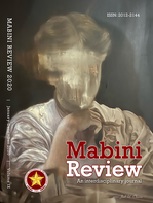IGOROTISM AND ORIENTALISM:The Photographs of Eduardo Masferré
DOI:
https://doi.org/10.70922/k2rq9568Keywords:
Photography, Igorots , Igorotism, Orientalism, Eduardo MasferréAbstract
This paper seeks to provide a critical reading of the photographs of photographer Eduardo Masferré. The photos reviewed were part of the collection in E. Masferré, People of the Philippine Cordillera Photographs, 1934-1956 published in 1988. The book showcases the body of work of Masferré, a Spanish Filipino who is part of the Kankana-ey tribe through his mother. Considered as the father of Philippine photography, Masferré’s photos mirror his talent as well as reflect images, life, and work of the Igorots in Cordillera. Masferré made it his task to take hundreds of photographs of the Cordillera to document its culture and tradition, display the remarkable knowledge of the Igorots in agriculture, showcase the unique character of the area, and illustrate the humanity of his people. Using the theory of Igorotism and theory of orientalism, Masferre´s photos were analyzed to determine the Igorotist and orientalist elements in Masferre’s photos and how these were formed in his art. This research studied the artist and his works while also seeking to understand the representation of the people of Cordillera in Masferré’s photographs. As Masferré’s body of work was explored, the researcher also looked into the life of Masferré, his influences, and the forces that shaped the Igorotist and orientalist elements in his masterpiece. The findings were interpreted to find out which of these forces prevailed – Masferré’s Igorotism ideology or the invisible orientalist influence.
Downloads
Downloads
Published
Issue
Section
License
Copyright (c) 2022 AARichela L. dela Cruz (Author)

This work is licensed under a Creative Commons Attribution-NonCommercial 4.0 International License.
Articles published in the MABINI REVIEW will be Open-Access articles distributed under the terms and conditions of the Creative Commons Attribution-Noncommercial 4.0 International (CC BY-NC 4.0). This allows for immediate free access to the work and permits any user to read, download, copy, distribute, print, search, or link to the full texts of articles, crawl them for indexing, pass them as data to software, or use them for any other lawful purpose.


